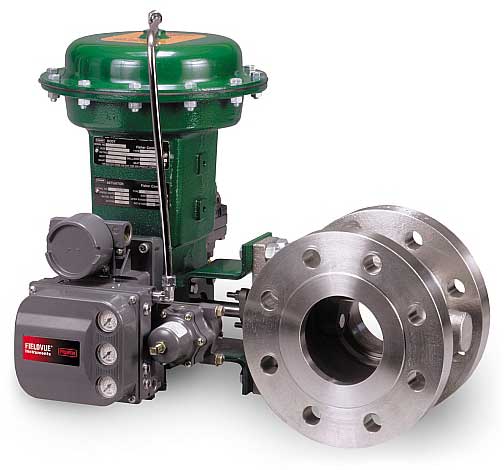Reliable Control Valves: Trick Components for Effective System Monitoring
Reliable Control Valves: Trick Components for Effective System Monitoring
Blog Article

Maximize Energy Financial Savings and Convenience With Advanced Building Automation Controls
In the world of contemporary style and center monitoring, the combination of sophisticated building automation manages stands as a pivotal innovation. By taking advantage of the power of automation, buildings can adapt, react, and progress in methods that were when unthinkable.
Power Efficiency Advantages
Power performance benefits can dramatically minimize power intake and functional prices in buildings. By implementing energy-efficient techniques and innovations, structure proprietors and drivers can accomplish substantial financial savings while likewise adding to environmental sustainability. One of the main benefits of boosting energy efficiency in structures is the decrease of utility expenses. Energy-efficient systems, such as innovative building automation controls, can optimize making use of resources like air conditioning, home heating, and illumination, bring about reduced energy expenses over time.
Moreover, improved power effectiveness can extend the lifespan of building equipment and systems. By running a lot more effectively, HVAC systems, lighting fixture, and other structure parts experience much less damage, leading to minimized upkeep and replacement expenses. Furthermore, energy-efficient structures commonly regulate greater property values and rental rates, offering lasting financial advantages to owners.
Additionally, energy efficiency can boost owner comfort and productivity. Appropriately regulated interior atmospheres with optimal illumination and thermal problems create a more conducive and positive work area, leading to improved worker contentment and performance. In general, the power effectiveness benefits associated with innovative structure automation controls are diverse, incorporating cost savings, ecological stewardship, and resident health.
Boosted Convenience Control
Enhancing convenience control in structure settings calls for an advanced combination of advanced automation systems for optimum passenger wellness. By utilizing innovative building automation controls, centers can customize the indoor atmosphere to meet the certain needs and preferences of occupants. control valves.
Boosted convenience control surpasses standard temperature level modifications. It consists of functions such as tailored setups, occupancy sensing units, and natural light application to develop a dynamic and receptive setting. By integrating these innovative controls, structures can not just improve convenience however also boost power performance by enhancing system operations based upon real occupancy and usage patterns. Eventually, focusing on occupant convenience via advanced automation systems leads to a more delightful and much healthier indoor environment.
Operational Efficiency Improvements

In addition, the implementation of real-time monitoring and analytics devices makes it possible for building operators to determine power inadequacies and operational abnormalities quickly. By constantly monitoring energy usage patterns and system performance metrics, changes can be made in real-time to optimize energy intake and guarantee peak operational efficiency. control valves. In addition, incorporating need reaction her comment is here approaches into building automation controls can further enhance functional performance by dynamically readjusting energy use based on grid conditions and rates signals
Indoor Climate Optimization
Reliable interior environment optimization is a basic element of structure automation controls, making sure residents' convenience and health while optimizing energy financial savings. By using advanced sensors and controls, constructing automation systems can continuously adjust and keep track of temperature, moisture degrees, air top quality, and ventilation to create an optimum indoor atmosphere. Keeping comfortable and regular problems not only improves resident satisfaction yet also boosts productivity and overall well-being.
Indoor climate optimization additionally plays a critical duty in energy effectiveness. By fine-tuning cooling, heating, and ventilation systems based on real-time information and occupancy patterns, building automation controls can substantially decrease power usage - control valves. For example, applying approaches such as demand-controlled air flow and thermal zoning can aid lessen energy waste while making sure that each area of the building receives the required conditioning.

Sustainable Environment Development
Structure automation regulates not only maximize interior environment problems for power effectiveness and passenger comfort yet likewise lay the structure for producing a sustainable environment via strategic monitoring of systems and resources. By incorporating advanced structure automation innovations, such as sensing units, actuators, and smart software, centers can monitor and adjust energy use in real-time to minimize waste and minimize their carbon footprint. These systems allow predictive maintenance, determining prospective problems before they escalate and maximizing equipment performance to enhance long life and performance.
Additionally, lasting environment creation expands past power monitoring to include water preservation, waste reduction, and indoor air top quality improvement. Building automation controls can control water use, discover leakages, and make sure correct garbage disposal methods, adding to general sustainability initiatives. In addition, by checking and managing ventilation and purification systems, these modern technologies enhance occupant wellness and productivity while reducing energy usage related to cooling and heating operations.
Conclusion
Finally, progressed structure automation regulates offer considerable benefits in terms of energy savings, comfort control, functional effectiveness, indoor climate optimization, and developing a lasting setting. By executing these controls, structures can achieve optimal performance while reducing energy intake and boosting owner comfort. It appears that using innovative automation technology is important in improving building performance and developing an extra company website sustainable future.
Power performance advantages can substantially lower energy usage and operational costs in buildings. In general, the power efficiency advantages linked with innovative building automation controls are complex, incorporating cost financial savings, environmental stewardship, and passenger wellness.
In addition, integrating demand feedback techniques into building automation controls can additionally enhance functional efficiency by dynamically readjusting power usage based on grid problems and prices signals.
Building automation manages not only maximize interior climate conditions for energy performance and occupant comfort yet additionally lay the structure for creating a sustainable setting with critical administration of resources and systems.In final thought, progressed structure automation regulates deal considerable advantages in terms of power savings, convenience control, operational effectiveness, indoor climate optimization, and creating a lasting setting.
Report this page